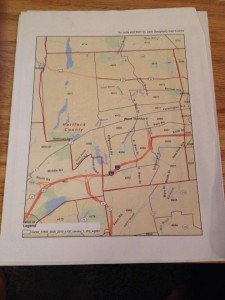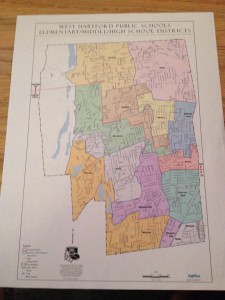View Alternative Schools in Connecticut in a full screen map
Category: 3 design choices
Protected: Move UP! Design Choices
Assignment 3
After meeting with Erin Kemple last week we decided at our first plan would be that I read through the Connecticut Analysis of Impediments to Fair Housing Choice, which is a report hat is still in the process of being completed. This document is over 200 pages and includes a lot of information so while going through it I made a list of data that I think we should make available using visualizations. Erin Kemple is also going to go make her own list so that at our next meeting we can compare and decide together what information we think is significant to use and then we will have a better idea about how exactly to display he selected data. Although there is still much to be decided on, I have come up with some ideas for design choices, with some guidance from Erin about where I can look for some inspiration.
Since a significant portion of the report addresses racial segregation statewide in Connecticut, I have been thinking about and researching different ways racial segregation has already been shown using maps. The Atlantic Magazine has a very interesting map of racial segregation throughout the United States that uses individual dots to display population density by race in different parts of the country, as soon below.

A map similar to this would be useful for Connecticut Fair Housing, but only if other variables can be added that are related to impediments to housing opportunities that would allow viewers to have a better understanding of what groups of people are being affected by certain housing practices and policies, mostly focusing on people of color, people with lawful sources of income other than employment, people with disabilities, single-parent households and LGBT people.
I also came up with another idea that I thought of by looking at a Comprehensive Opportunity map on the Al Jazeera America website as well as a map displayed in the Impediments to Fair Housing Choices report of how two programs, the federal Housing Choice Section 8 Voucher program (HCV) and the State Rental Assistance Payment program (RAP) have statewide patterns of that their participants are living in areas that are disproportionately low income and have a significant population of people of color. This means that these programs are handing out vouchers to their participants (who are disproportionality made up of people of color, those with disabilities, single-parent households) in low income areas, which most likely means that there are little opportunities in these areas. The map of the Comprehensive Opportunity Index for the Baltimore Region shows different sections of various levels of opportunity in terms of jobs, safe neighborhoods, and good schools. While I do not know if it is possible to obtain this information about opportunity index scores throughout Connecticut, it could be significant if I am able to get data about something such as where good schools are located and created a map that compares this data with where housing voucher participants are living.
Assignment #3- Great by 8 dataviz priorities
I had my first meeting with my partnership coordinator, Julia Rusert this week. Julia and I began figuring out where a good starting point is and what I can begin working on. Julia had a student who did some asset mapping of preschool and day care centers last year and so we discussed my making an asset map of other resources such as health care providers, mental health providers, and family resource centers.
Julia also mentioned that Jack is doing the mapping for children who have had the Early Development Instrument done on them and thought it would be helpful if I learned more about that on their website:
http://www.offordcentre.com/readiness/EDI_factsheet.html
My initial thoughts were that batchgeo maps will be very useful for these projects, however, as Julia and I discussed, Great by 8 does not have any data to be able to make such maps yet. Therefore I am beginning to gather data that could potentially be useful. Julia gave me a couple different maps that outline West Hartford for me to begin. Julia suggested that I begin looking for census tracks and census block groups.
My goals this week are to look into and research the location of these resources that are useful, such as pediatric practices and dental locations in West Hartford.
The final goal is to hopefully be able to have one map that overlays all these services with areas of need.
Assignment 3
For my data visualization partnership with Professors Jack Dougherty and Rachel Levanthal-Weiner, it appears I will be focusing primarily on two different projects.
The first project will require me to work with data utilized in various educational studies classes. Often there are various sets of data that could be better seen and taught if presented as an interactive visual. I intend to display this information in interesting and intuitive ways. For example, in my first piece of work for the class, I was able to demonstrate a strong correlation between median household income and achievement on the Connecticut Mastery Test for 8th graders. This visual is displayed below.
The second project will require me to work on and improve a map showing various cycling routes in the city of Hartford. This is a data visualization in itself, and working on it provides a perfect scenario to learn other very useful skills. It will not only allow me to work with a map-based visualization extensively, but will also expose me with javascript coding, a very useful coding language for web design. Seeing as I’m currently enrolled in a computer science class, and am interested in working with computer programming, I’m very grateful for this opportunity.
It appears with both of these particular projects, many kinds of visualizations could be appropriate and useful. Specifically for the first one, I would think graphs demonstrating correlation would be most useful, however. Most of the info I have seen thus far is searching for trends, therefore graphs that can show both an explanatory and response variable may be most appropriate.
Though I am still new to the many ways data can be visualized, I have been intrigued by what I have seen thus far. I look forward to working with and being able to explore real world trends.


